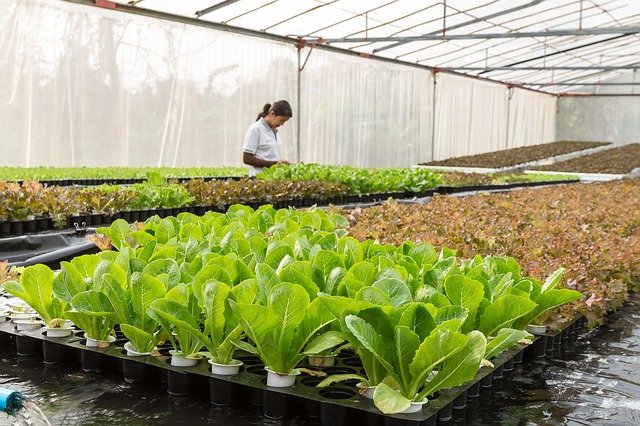
Covering the roofs of greenhouses with photovoltaic panels and converting them into power plants for solar energy is becoming an increasingly attractive option thanks to the benefits it brings, on the one hand, to the environment through the production of clean energy and, on the other hand, to the farms by reducing their production costs and making them more sustainable.
In recent years, many photovoltaic greenhouses have been emerging that enable a true symbiosis between the agricultural world and the world of renewable sources.
What is a photovoltaic greenhouse?
Agriculture is one of the most energy-intensive sectors. Agricultural machinery needs fuel and irrigation of fields is nowadays more expensive due to high energy costs. Against this backdrop, self-consumption of energy is a solution for agriculture.
One alternative is to use the roofs of greenhouses and install solar panels on them to reduce part of the electricity bill. The other alternative is to use solar panels to build the greenhouse.
A photovoltaic greenhouse is a fixed structure, attached to the ground by a solid anchor, but without a foundation to support it, so from a regulatory point of view, technically, photovoltaic greenhouses are not considered “buildings”. The greenhouse is designed and built to grow agricultural products, plants and flowers. Its structure can be made of wood, aluminum, iron and the roof is made of photovoltaic panels.
Photovoltaic greenhouses are a novelty in the world of agriculture and energy although they have been built for many years in northern China. Large solar energy companies are starting to implement photovoltaic greenhouse projects throughout the world, which are guaranteed to be a great success.
Advantages of photovoltaic greenhouses
Here are the main advantages of using solar energy in greenhouses:
Cost savings
As we have already said, agriculture is a sector that consumes a lot of energy. It needs energy to maintain the temperature, lighting and cultivation processes. But, in addition, a power outage can affect the crops.
With the installation of photovoltaic panels in a greenhouse, the energy bill is reduced as soon as they are installed. The main reason why greenhouses are being retrofitted with solar energy is the long-term cost savings.
Choice of design and location
A photovoltaic greenhouse is not a building, so it allows you to choose the best orientation of the panels, with the right tilt and the optimal orientation, towards the south.
Placing solar panels on a greenhouse differs from placing them on a building. The mounting structure of the photovoltaic system in a greenhouse is much more versatile and may even be semi-removable, being possible to optimize the inclination and orientation of the photovoltaic modules depending on the season or the need for ventilation inside the greenhouse.
Energy storage
Another great advantage of installing photovoltaic panels in a greenhouse is the possibility of using the energy produced by the panels for the regular operations of the greenhouse.
This is achieved by regulating the operation of the greenhouse through an automated system. With humidity and temperature sensors it is possible to activate the ventilation system in an automated way or to activate the irrigation, etc…
How Photovoltaic Panels Affect Crops
This new solar energy technology has no adverse effects on your crops. On the contrary, there are studies that conclude that it can improve them.
- Reduced direct sunlight: Most plants need direct sunlight, but with limits, since once crops have maximized their ability to use sunlight for photosynthesis, more sunlight can actually impede their productivity.
- Higher productivity for some crops: Many food crops perform better when they are protected from direct sunlight, as can be the case, for example, with tomato production.
- Less water is used: The panels provide shade for crops and therefore cooler temperatures during the day and warmer temperatures at night. They also maintain humidity for longer, so water consumption can be reduced.
As we explained at the beginning of this article, the symbiotic relationship between solar energy and agriculture brings benefits for crops and farm owners but also for the environment, if we take into account the savings in water and tons of CO2 emitted into the atmosphere, which is a huge benefit for society as a whole and the need to continue developing technologies that ensure a more sustainable environment.
You may be interested in: What Is the Typical Cost of Solar Panels?

